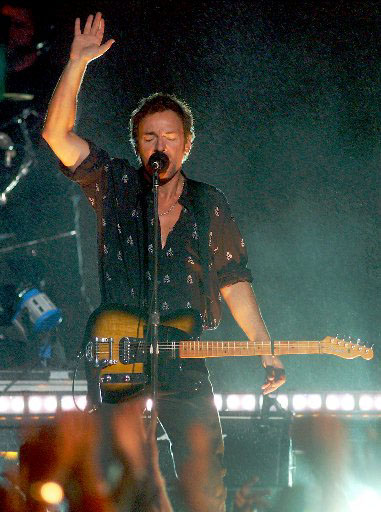|
|
|
 |
|
|
Arts
& Entertainment > Music |
|
The development of the arts in America has been marked by a tension between two strong sources of inspiration - European sophistication and domestic originality. Blues is a native American musical and verse form, with no direct European and African antecedents of which we know. The slaves sang songs telling about their extreme suffering and privation. The blues was mostly sung in the South and only spread northward in the 1930s and 1940s with the migration of many blacks from the South. The 1920s saw the blues become a musical form more widely used by jazz instrumentalists. Jazz originated in New Orleans early in the 20th century, bringing together elements from ragtime, slave songs, and brass bands. Jazz was the reigning popular American music from the 1920s through the 1940s. In the 1930s and 1940s, the most popular form of jazz was "big band swing," so called after large ensembles conducted by the likes of Glenn Miller and William "Count" Basie. In the late 1940s, a new, more cerebral form of mostly instrumental jazz, called be-bop, began to attract audiences. Rhythm & blues was a combination of jazz and other “race” music with the lyrical content, sonic gestures and format of the blues. The epoch of rhythm & blues spans the late 1940s to the early 1960s. The melding of rhythm & blues with country and western music in the mid-1950s gave birth to rock and roll. To make the new music more acceptable to a mainstream audience, white performers and arrangers began to "cover" rhythm and blues songs - singing them with a toned down beat and revised lyrics. At the beginning of his career, Elvis Presley covered black singers. Soon, however, Presley was singing original material, supplied by a new breed of rock and roll songwriters. A challenge to rock appeared in the form of folk music. Folk music was based largely on ballads brought over from Scotland, England, and Ireland; it had been preserved in such enclaves as the mountains of North Carolina and West Virginia. Bob Dylan extended the reach of folk music by writing striking new songs that addressed contemporary social problems, especially the denial of civil rights to black Americans. The division between the two camps - rock enthusiasts and folk purists - came to a head when Dylan was booed for accompanying himself on electric guitar at the 1965 Newport Folk Festival. Far from being deterred, Dylan led virtually the entire folk movement into a blend of rock and folk. Like folk,
country music descends from the songs brought to the United States from
England, Scotland, and Ireland. The original form of country music,
called "old-time" and played by string bands, can still be
heard at festivals held each year in many southern states. Modern country
music developed in the 1920s, roughly coinciding with a mass migration
of rural people to big cities in search of work. Like many other forms
of American pop music, country lends itself easily to a rock-and-roll
beat, and country rock has been yet another successful music merger.
Until the end of the 19th century, there really was no distinctive classical music, e.g. symphony, opera, chamber music, sonata etc., in America. As late as 1895, the composer Antonin Dvorak felt the need to urge American composers to look to their native sources for inspiration and material. He offered his “New World” Symphony (stirred by our spirituals and Indian rhythms) as an example of what could be achieved. With the advent of the 20th century, sparked by the immigrant urge to assimilate, isolationism, the excitement of jazz, and a “can-do” spirit, American composers started to create an astounding variety of distinctively American classical music. Composers such as George Gershwin and Aaron Copland incorporated homegrown melodies and rhythms into forms borrowed from Europe. Music composition of the greater part of the 20th century, especially the period after World War II, is characterized by experimentation and a constant search for new systems of writing music, new forms and new styles. |
||
| Texts
are abridged from U.S. State Department IIP
publications and other U.S. government materials. |
||
| What
kind of information materials are available?
CD: These documents are available in fulltext format on the About the USA CD-ROM. Teachers: Request a copy for classroom use. L: Selected documents are available in German as well as other languages, including Arabic, Chinese, French, Spanish, Persian and Turkish. |
DISCLAIMER
Any reference obtained from this server to a specific commercial product, process, or service does not constitute or imply an endorsement by the United States Government of the product, process, or service, or its producer or provider. The views and opinions expressed in any referenced document do not necessarily state or reflect those of the United States Government. |
 U.S. Diplomatic Mission to Germany /Public Affairs/ Information Resource Centers Updated: January 2009 |
